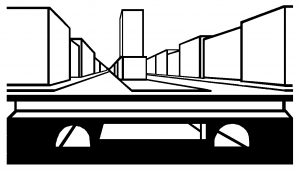Promat d.o.o.

Leon Pajek, Promat d.o.o.
Formal Education
- High school for chemistry – Ljubljana -Slovenia
- University of Ljubljana, School of Economics and Business- bachelor’s degree
Working experiences
- Sales of non-combustible insulation materials – stone wool for construction buildings and OEM intend of use in EU markets
- Sales manager Promat for Slovenian market for construction buildings and OEM
- Managing director Promat South eastern Europe
- Commercial director Promat and Siniat for Western Balkan
- Regional tunnel Manager Promat- Etex Building Performance DACH EE
Why is passive fire protection in tunnels needed?
Long list of severe fires in the tunnels from the past is showing us that the fire in the tunnel can occur. How severe for the construction, the fire will be is depending mainly on fire load. Temperature in case of fire in the tunnel is rising much faster than in other construction buildings and reaching much higher temperatures. Nowadays we have different time-temperature fire curves for fire scenario, used around the world. Probably most often used fire scenario curve is RWS fire curve which expecting rise of temperature in first 10 minutes up to 1200 °C and it goes up to 1350 °C. But also the other fire scenarios are similar. Such a fast growth can lead to explosive spalling of the concrete which is covering and protecting steel reinforcement what allow very quickly to overheating of it over critical temperature. Second negative impact is extensions of loadbearing structure what create the cracks in it. All these negative impacts can create the collapse of the tunnel structure.
Surrounding of the tunnel can be impacted due to collapsing of it. In case of tunnel in the rocky mountain the surrounding will be much les impacted as in case of Immersed or tunnel under the river or a sea. Collapsing of loadbearing structure of such a tunnel can lead to overfloating of the tunnel in relatively short period of time. Even before evacuation is finished and rescue team or fire brigade can retreat.
In case of constructions over the tunnels like roads, railways or buildings, after collapse of a tunnel, the collapse of them is also very possible. Secondary damage risk for lives and property damages, is very high.
Because of all those different risks and possible impacts, the European Directive 2004/54/EC is prescribing that the risk Analyses shall be done and carried out by a body which is functionally independent from the tunnel Manager. Most of European countries implemented requests from Directive in the national legislation and extend it with additional requires and details.
There are also economical reasons for implementation of fire protective measurements in the tunnels. Results of a Feasibility and Resultant Cost Study for Applying Fire Protection Boards in Tunnel Structures made by Roland Leucker, prof. Dr Ing., director, STUVA, show that costs arising from not installing of fire protection (boards in this example) are many times bigger than costs of installation. Losts in tunnels with tolls are – only with one big fire in 100 years – due to lost tolls four times bigger than costs of life cycle of fire protection boards in the same period of time.



